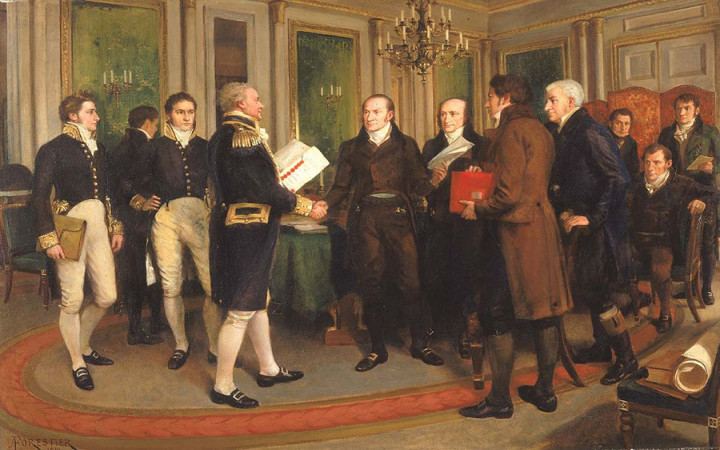Today’s Wonder of the Day was inspired by Charlie. Charlie Wonders, “What was the war of 1812” Thanks for WONDERing with us, Charlie!
When it comes to patriotic songs, nothing gets people to their feet quicker than the first few notes of The Star-Spangled Banner. As you sing the words, you might think that they were written during the American Revolution.
In reality, Francis Scott Key wrote the poem that would become the United States national anthem quite a few years after the American Revolution. Those immortal words were inspired by a fierce battle, though, that occurred during what some historians refer to as the "second" war for independence: the War of 1812.
After its independence from Great Britain, the United States began to to the south and the west. The young country also began to forge important new trade relationships with other nations.
Unfortunately, the young nation also experienced some growing pains. Great Britain was engaged in a fierce war with France in Europe, and both of those nations sought to restrict the U.S. from trading with the other.
Great Britain also occasionally replenished its dwindling naval forces by removing American sailors from U.S. merchant vessels, a practice known as impressment. These practices were two of the primary causes of the War of 1812, along with U.S. suspicions that Great Britain was encouraging Native Americans to resist American expansion to the west.
Although the young nation was severely divided in its support for the war, James Madison signed a declaration of war against Great Britain on June 18, 1812. Soon afterward, the U.S. attacked Canada, which was a British colony at the time.
Although U.S. leaders thought invading Canada would be easy, U.S. troops were soundly defeated by Canadian forces led by British soldier Sir Isaac Brock and Native American forces led by Tecumseh, which led to the surrender of Detroit. U.S. forces later regained Detroit under William Henry Harrison at the Battle of Thames, where Tecumseh was killed.
The major battles of the War of 1812 were a mixed bag for U.S. forces. Commodore Oliver Hazard Perry took control of the Northwest Territory with a decisive victory in the Battle of Lake Erie. In August 1814, however, British forces captured Washington, D.C., burning the Capitol and the White House in the process.
On September 13, 1814, British forces bombed Fort McHenry in Baltimore for a solid day. U.S. forces stood strong, though, and hoisted a huge American flag the next morning. This sight was what inspired Francis Scott Key to write The Star-Spangled Banner.
Great Britain sought an armistice after their failure to capture Baltimore. The Treaty of Ghent was signed on December 24, 1814, and eventually ratified on February 17, 1815, officially ending the war.
Because it took so long to communicate in the early 19th century, British forces were unaware that a treaty had been signed. On January 8, 1815, they carried out a major attack on New Orleans. However, U.S. forces led by Andrew Jackson soundly defeated the British.
Although the terms of the Treaty of Ghent ensured that the U.S. did not actually achieve any of its objectives that originally justified going to war, the victories at Baltimore and New Orleans boosted American pride and kicked off a surge of patriotism that fueled a renewed sense of purpose in expanding the young nation to its borders further south and west.




